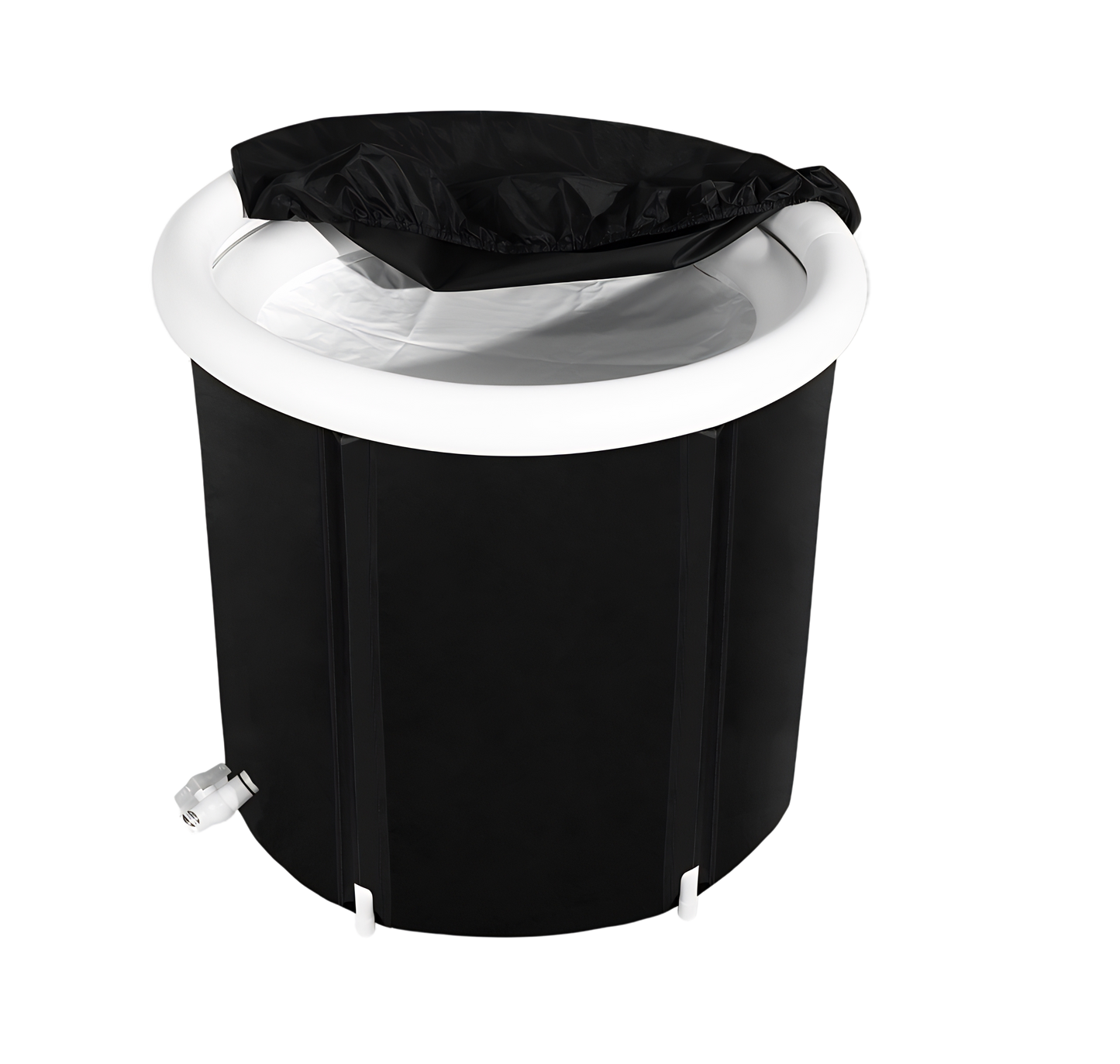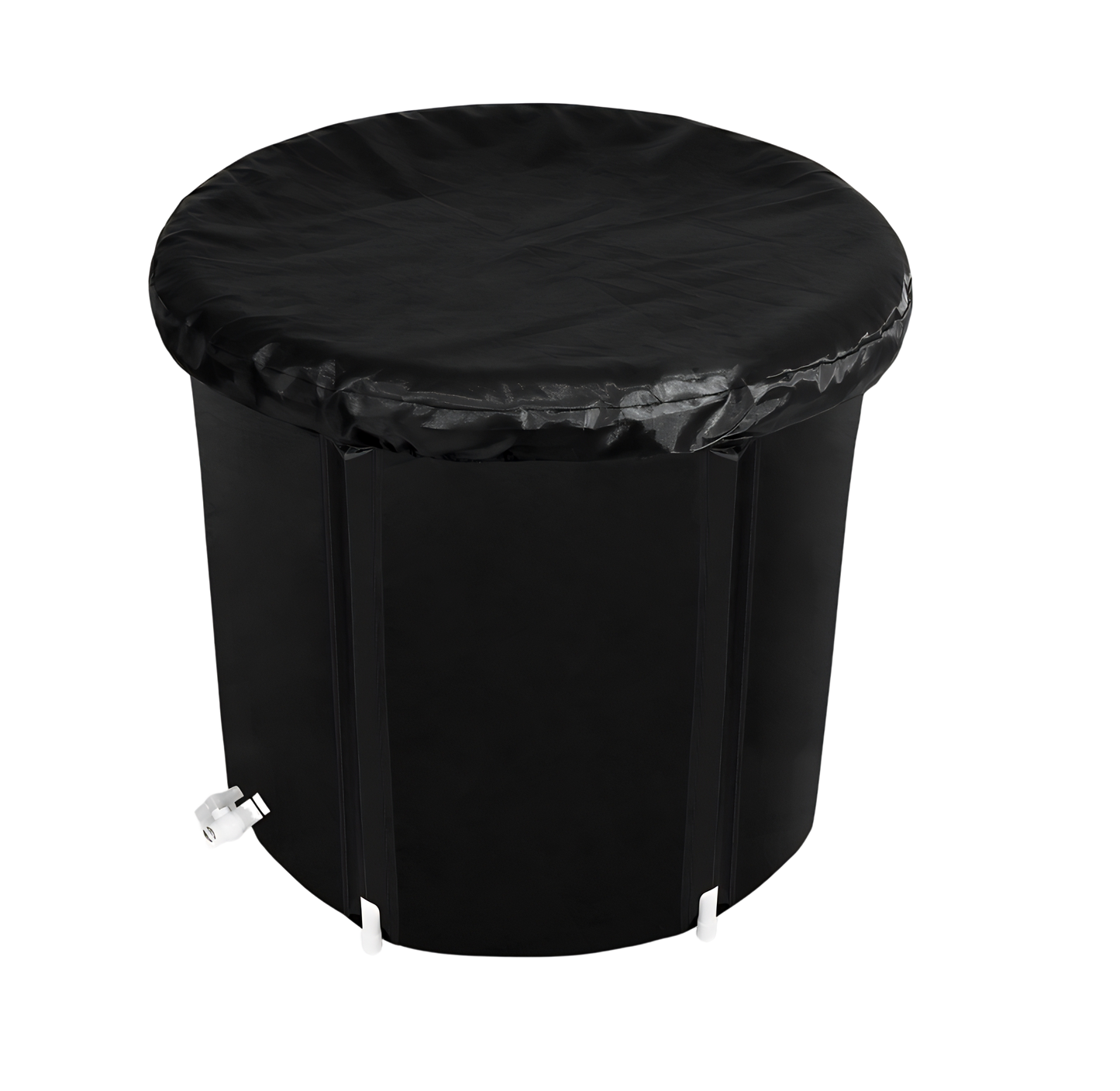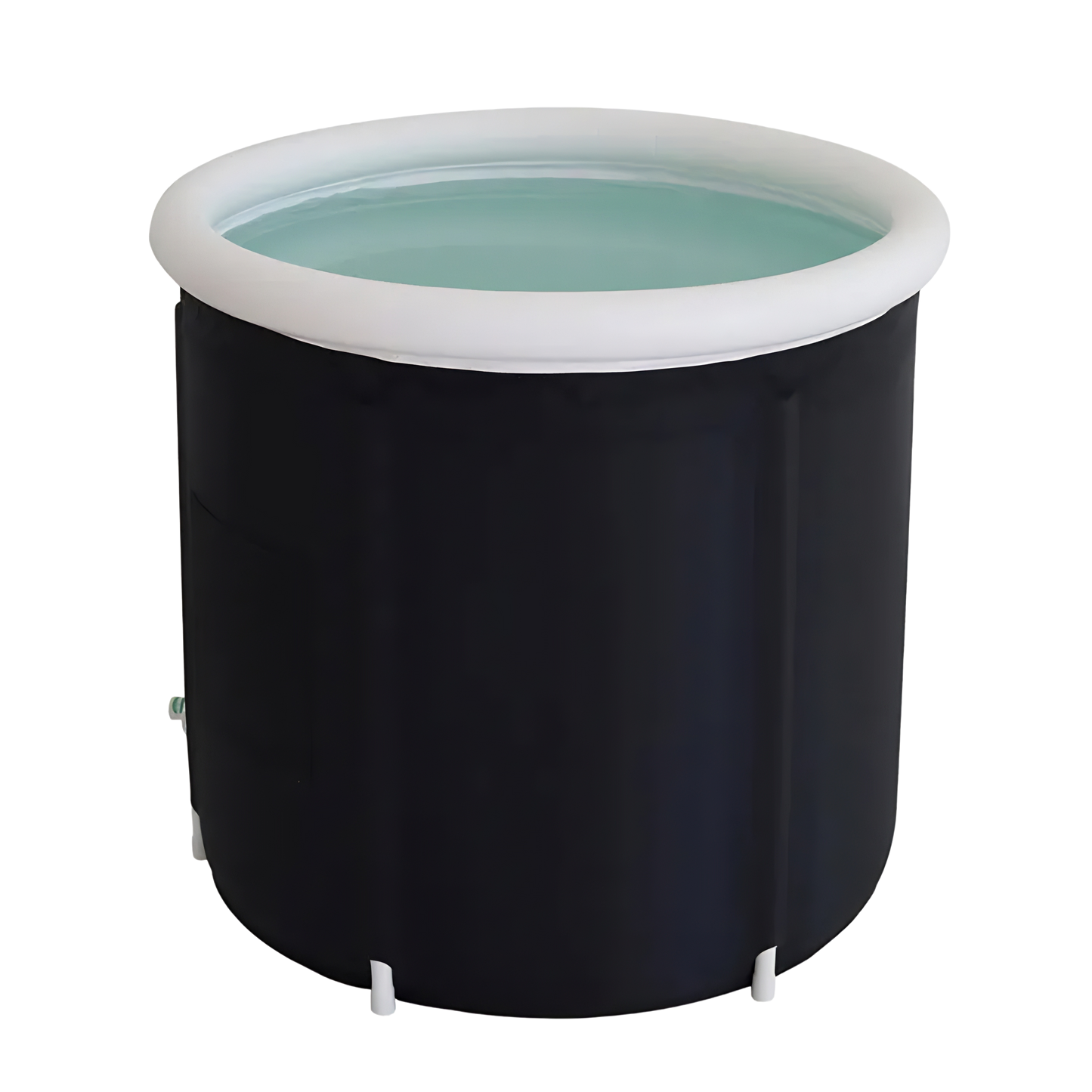Pregnancy is an incredible journey, but it can also come with its fair share of discomforts. Many expectant mothers are looking for safe and effective ways to manage these discomforts and prioritize their well-being. Ice bath therapy has gained popularity as a refreshing and rejuvenating practice, but is it safe for pregnant women?
Key Takeaways:
- Ice baths can be a safe and effective therapy for pregnant women when done correctly.
- Consult with your healthcare provider before starting ice bath therapy during pregnancy.
- Take steps to ensure the safety and comfort of yourself and your baby during the ice bath.
- Consider alternative relaxation techniques if full immersion is not preferred or recommended.
- Listen to your body and make adjustments as needed to ensure a positive experience.
Benefits and Risks of Ice Baths During Pregnancy
Incorporating ice baths into your pregnancy self-care routine can offer both potential advantages and possible risks. It's important to understand the benefits and take precautions to ensure the safety of both you and your baby. Here, we explore the physiological advantages, potential risks, insights from medical experts, and personal testimonies from pregnant women who have experienced ice baths during pregnancy.
Understanding the Potential Advantages
Ice baths during pregnancy can provide numerous benefits for your well-being. Some of the potential advantages include:
- Reduced inflammation: Immersing your body in cold water can help decrease swelling and inflammation, providing relief from pregnancy-related discomfort.
- Improved circulation: The cold temperature stimulates blood circulation, which can enhance the delivery of oxygen and nutrients to both you and your baby.
- Relief from muscle soreness: Ice baths can soothe and alleviate muscle soreness, a common occurrence during pregnancy.
Recognizing the Possible Risks
While ice baths can be beneficial, it's crucial to be aware of the potential risks. These include:
- Impact on the fetus: Exposure to extreme cold temperatures for an extended period may have an effect on fetal development. Consulting with your medical expert is essential to ensure the well-being of your baby.
- Potential hypothermia: Prolonged exposure to cold temperatures can lead to hypothermia, which poses risks to both you and your baby. It's important to monitor your body temperature and avoid staying in the ice bath for too long.
Insights from Medical Experts
Medical professionals play a crucial role in providing guidance and keeping you informed about the safety and potential benefits of ice baths during pregnancy. Consulting with your healthcare provider is highly recommended before incorporating ice baths into your routine. They can provide personalized advice based on your unique circumstances and ensure your well-being.
Personal Testimonies from Pregnant Women
Real-life experiences can offer valuable insights and perspectives on ice baths during pregnancy. Hearing from other pregnant women who have tried ice baths can help you understand their personal journeys, challenges, and benefits they encountered. Remember that each pregnancy experience is unique, and it's crucial to prioritize your safety and well-being above all.
How To Ice Bath While Pregnant
Performing an ice bath while pregnant requires careful consideration to ensure the safety and well-being of both the mother and the baby. By following these steps and implementing relaxation techniques, pregnant women can experience the benefits of cold therapy without unnecessary risks.
Pre- and Post-Ice Bath Steps
Prior to getting into the ice bath:
- Consult with your healthcare provider: It is essential to seek medical advice before attempting an ice bath while pregnant. Your healthcare provider can assess any individual risks or concerns specific to your pregnancy.
- Prepare a safe environment: Ensure the area around the ice bath is clear of obstacles and slip-resistant to minimize the risk of falls.
- Monitor water temperature: Fill the ice bath with cold water and add ice gradually until the desired temperature is reached. Aim for a temperature between 50°F to 60°F (10°C to 15°C).
After the ice bath:
- Gradually warm up: Slowly acclimate your body to warmer temperatures by wrapping yourself in a warm blanket or taking a warm shower.
- Stay hydrated: Drink plenty of fluids to replenish lost moisture during the ice bath.
- Observe for any adverse reactions: Pay attention to your body's signals and contact your healthcare provider if you experience any concerning symptoms.
Relaxation Techniques in the Ice Bath
To maximize relaxation during the ice bath:
- Practice deep breathing: Take slow, deep breaths to promote relaxation and help manage any discomfort.
- Engage in visualization techniques: Picture yourself in a calm and peaceful setting to enhance relaxation and distract from the cold sensations.
- Listen to soothing music or guided meditations: Use headphones to listen to calming auditory experiences that can help you relax and stay present during the ice bath.
Alternative Ways to Reap Ice Bath Benefits
If you have concerns about full immersion in an ice bath, there are alternative methods to enjoy the benefits of cold therapy during pregnancy:
- Cold compresses: Apply cold compresses or ice packs to specific areas of discomfort, such as swollen ankles or sore muscles.
- Cold showers: Take short, cool showers to invigorate the body and promote circulation.
- Cryotherapy chambers: Consider visiting specialized facilities that offer cryotherapy treatments tailored for pregnant women.
It's important to listen to your body and make decisions that align with your comfort level and healthcare provider's recommendations. Always prioritize the safety and well-being of you and your baby when incorporating ice baths or alternative cold therapy methods during pregnancy.
Conclusion
Summarizing the do's and don'ts of ice baths while pregnant, it is essential to prioritize both safety and individualized decision-making. Cold therapy during pregnancy, when done correctly, can offer potential benefits such as reduced inflammation, improved circulation, and relief from muscle soreness. However, it is important to follow ice bath safety guidelines and consult with healthcare professionals throughout the process.
Summarizing the Do's and Don'ts
When considering ice baths during pregnancy, here are some crucial guidelines to keep in mind:
- Do consult with your healthcare provider before beginning any cold therapy regimen.
- Do ensure that the water temperature is around 10-15°C (50-59°F) to prevent hypothermia.
- Do listen to your body and take breaks if needed during the immersion to manage discomfort and avoid overexertion.
- Do practice relaxation techniques, such as deep breathing or visualization, to help cope with the intense cold.
- Don't stay in the ice bath for more than 10-15 minutes to prevent prolonged exposure and stress on your body.
- Don't immerse your entire body if you have concerns; instead, try alternatives like cold compresses or localized cold therapy.
- Don't ignore any unusual symptoms or discomfort during or after an ice bath; reach out to your healthcare provider for guidance.
To learn more about the safe of ice baths during pregnancy, check out our detailed article: Are Ice Baths Safe When Pregnant?
Final Thoughts on Cold Therapy During Pregnancy
In conclusion, while ice baths can provide potential benefits during pregnancy, it is crucial to prioritize safety, individual needs, and medical guidance. Every individual is unique, and the appropriateness of cold therapy may vary. Always consult with healthcare professionals who can provide personalized advice based on your specific circumstances. By following the do's and don'ts, you can make informed decisions and potentially experience the benefits of cold therapy while ensuring the well-being of both you and your baby.
FAQs
How can I safely perform an ice bath while pregnant?
To safely perform an ice bath while pregnant, it is recommended to consult with your healthcare provider beforehand. They can provide personalized guidance and address any concerns specific to your pregnancy. Additionally, follow these steps: 1. Fill a bathtub or container with cold water. 2. Gradually add ice cubes to the water until it reaches a temperature that is comfortable for you. 3. Gently lower yourself into the water, ensuring that your body is fully submerged up to your chest. 4. Remain in the ice bath for 10-15 minutes, or as recommended by your healthcare provider. 5. To minimize discomfort, practice deep breathing and relaxation techniques during the bath. 6. After the ice bath, wrap yourself in a warm towel or blanket to gradually warm up your body temperature. Remember to listen to your body, and if at any point you feel lightheaded or uncomfortable, exit the ice bath immediately.
What are the benefits of ice baths during pregnancy?
Ice baths during pregnancy can offer a range of benefits, including: - Reduced inflammation: Cold therapy can help to decrease inflammation in the body, which is especially beneficial for pregnant individuals experiencing swelling or joint pain. - Improved circulation: Immersion in cold water stimulates blood flow and can enhance circulation, aiding in the delivery of oxygen and nutrients to both you and your baby. - Relief from muscle soreness: Ice baths can provide relief from muscle aches and pains commonly experienced during pregnancy, promoting relaxation and overall well-being.
Read More: Can You Do Ice Baths While Pregnant?
What are the possible risks and considerations of ice baths during pregnancy?
While ice baths can be beneficial, it is important to be aware of the potential risks and consider the following: - Impact on the fetus: The cold temperature of an ice bath may affect the fetus, so it's essential to consult with your healthcare provider before attempting an ice bath while pregnant. - Potential hypothermia: Prolonged exposure to cold temperatures can lead to hypothermia, a serious condition. Always monitor your body temperature and exit the ice bath immediately if you start feeling too cold. - Consultation with medical experts: It is recommended to seek advice from your healthcare provider who can provide personalized guidance based on your unique circumstances.
What are personal testimonies from pregnant women who have tried ice baths?
Personal testimonies from pregnant women who have tried ice baths report mixed experiences. Some have found relief from swelling, muscle soreness, and discomfort. However, it is crucial to remember that every pregnancy is different, and what works for one person may not work for another. It is always recommended to consult with your healthcare provider before attempting any new self-care practice during pregnancy.
Are there alternative ways to reap the benefits of cold therapy during pregnancy?
If you have concerns about full immersion ice baths while pregnant, there are alternative ways to experience the benefits of cold therapy, such as: - Using cold packs or ice packs on specific areas of discomfort or inflammation. - Taking cool showers or using cold water compresses to relieve muscle soreness or swelling. - Seeking out cryotherapy treatments that are specifically designed for pregnant individuals, as these options may provide a safer and more controlled environment for cold therapy.
Disclaimer:
The information provided in this article is for educational and informational purposes only and is not intended as medical or health advice. While we strive to provide accurate and up-to-date information, we are not health professionals. Therefore, any reliance you place on such information is strictly at your own risk.
Pregnancy is a sensitive period, and what might be safe for one individual may not be for another. We strongly recommend consulting with a healthcare provider or medical professional before making any decisions regarding ice baths or any other health-related practices during pregnancy. This article does not substitute for professional medical advice, diagnosis, or treatment.
We do not accept any responsibility for any liability, loss, or risk, personal or otherwise, incurred as a consequence, directly or indirectly, from any information or advice contained here. By reading this article, you acknowledge and agree that neither the author nor the website is liable for any losses or damages that may arise from your choice to use or not use the information provided.






